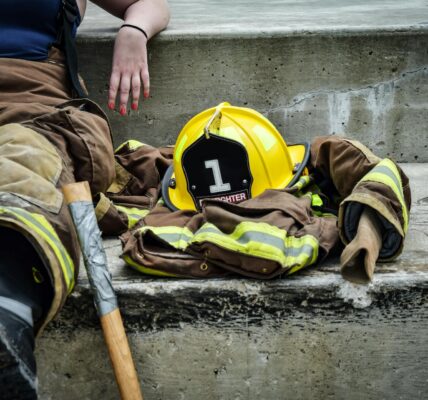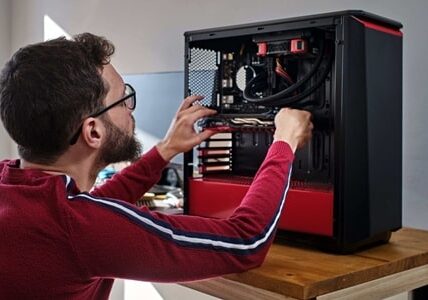Our daily lives depend heavily on elevators, particularly in multi-story buildings. Unexpected elevator malfunctions can be aggravating and annoying. Yet, recognizing the various causes of elevator problems and knowing how to deal with them can assist in swiftly and effectively resolving the issue.
What is an Elevator?
A vertical transportation device utilized to carry people or things between different floors of a building or structure is an elevator, sometimes referred to as a lift in some locales. An elevator is often housed inside a shaft and comprises a cab or car that moves up and down under the control of cables, motors, and pulleys. It’s a crucial component of multi-story buildings since it enables inhabitants to reach different floors quickly and effortlessly, doing away with the necessity for tiring stair climbing. Elevators have safety features in place to protect users, and over time, design and technology have advanced greatly to improve efficiency, comfort, and speed.

Let’s examine the typical causes of elevator problems and offer workable solutions for each one:
1. Power Supply Problems
Issues with the power supply are one of the most frequent causes of elevator failure. Elevators need a consistent and uninterrupted power source to run efficiently.
What to do if you think there may be a power supply issue is as follows:
- Examine the circuit breaker: Examine the building’s electrical panel first. Reset the circuit breaker in charge of the elevator if it trips. But if it keeps tripping, there might be an electrical problem that needs to be fixed by a specialist.
- Emergency Power System: Modern structures frequently have elevator backup power systems. Particularly during power outages, make sure the emergency power switch is turned on.
- Overloaded elevator: For safety purposes, elevators have weight restrictions. An overloaded elevator might not function as planned. How to solve this problem is as follows:
- Reduce the burden: If you think the elevator is too full, politely ask them to leave and lighten the burden inside the cab. The elevator should start operating normally once the weight is within the permissible range.
2. Sensor and Door Problems
To ensure safe functioning, sensors are installed in elevator doors. The elevator might not function properly if these sensors go bad.
What you can do is:
- Check for Obstructions: Examine the area surrounding the elevator doors for obstructions. Make sure there are no impediments, like debris or other objects, that would prevent the doors from shutting properly. Eliminate any obstructions that could hinder door functioning.
- Press the Door Open Button: Try pressing the “Door Open” button if the elevator doors won’t shut. Sometimes, the door mechanism can be reset with a single instruction.
- Elevator maintenance and technical problems: Elevators need consistent maintenance to run efficiently. The elevator could break down if maintenance is neglected or if technological difficulties appear. Here’s what to do in this circumstance:
- Contact Building Management: Inform the building management or owner right away if you are not one of them about the elevator problem. They can decide on an expert technician to examine and maintain the elevator.
- Regular Maintenance: Verify that the elevators in your building receive normal maintenance following manufacturer recommendations. Unexpected breakdowns can be prevented with preventive maintenance.
3. Emergency Stop Button Activated
Reason: Sometimes, customers unintentionally hit the emergency stop button, stopping the elevator.
Fix: Inspect the elevator cabin for an emergency stop button. Press it once again to disable the emergency stop and restore regular operation if it is lighted.
4. Inactive or upcoming maintenance
Reason: For planned maintenance or repairs, elevators might be temporarily taken out of operation.
Fix: Keep an eye out for any notices or evidence that the elevator isn’t working. If maintenance is planned, be patient and wait until the allotted amount of time has passed.
5. Communication Failure
Reason: Communication systems are frequently installed in elevators to transmit data to the control room. The elevator might stop operating if this system malfunctions for everyone’s safety.
Fix: Contact building management or the elevator service provider using the emergency phone or intercom within the elevator. To fix the communication issue, they might dispatch technicians.
6. Mechanical Failure
Reason: Cables, elevators and pulley motors are examples of mechanical parts that might break down or wear out over time.
Fix: Only certified elevator experts should carry out repairs in the event of a mechanical malfunction. To examine and resolve the mechanical issue, speak with the building administration or the elevator service provider right away.
7. Faulty Control System
Reason: It is occasionally possible for the control system which oversees elevator operation to experience bugs or software difficulties.
Fix: Inform the building administration or the elevator maintenance crew if you believe there is a control system issue. To fix the problem, the control system will need to be reset or reprogrammed.
8. Safety Sensors and Interlocks
Reason: Elevators are equipped with safety sensors and interlocks to stop them from operating in the event of a safety threat, such as a broken door interlock or a sensor picking up an impediment.
Fix: Speak with the building’s management or the elevator technicians right away if you believe there is a problem with a safety sensor or interlock. Only specialists should change or fix these safety elements because they are designed to avoid accidents.
Conclusion
Although it can be inconvenient to experience an elevator that isn’t working, knowing the possible causes and taking the right actions can speed up the problem’s resolution. Elevator issues are frequently rapidly resolved by fixing power supply problems, sensor issues, overloading, or by contacting building management for technical assistance. Whenever dealing with elevator-related problems, keep in mind that safety ought to always come first. You should also be sure to adhere to any building-specific rules or recommendations for troubleshooting elevators.

Santosh Kumar is an editor at unfoldstuffs.com and a professional content writer. With years of experience he is passionate for creating engaging, informative and impactful topics.









